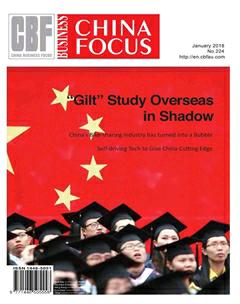Shanghai to Cap Population at 25 Million by 2035
Chinas cabinet said it has approved a plan for Shanghai to cap its population at 25 million by 2035 to ease pollution and relieve the strain on public services. In an attempt to contain urban sprawl, city planners were told they could only release up to 3,200 square kilometers of government land for development over the next 18 years, according to the document approved by the State Council. That land area is roughly half the size of the city at the end of 2015.
Shanghais population stood at 24.2 million people by end of 2016, up 0.4% from a year earlier, largely due to an influx of workers from other parts of the country, government data showed. Nearly 40% of the residents in Chinas financial hub were out-of-town workers, according to official statistics.
The city has seen its traffic woes worsen and air and water quality suffer as a result of unrestrained development. Last year, Shanghai experienced 276 blue-sky days, or days when the air quality is considered to be good, down from 343 in 2012, according to the Shanghai Environmental Protection Bureau.
The city government issued its latest smog advisory on December 24th, when the level of cancer-causing PM2.5 particulates rose above 200 micrograms per cubic meter, indicating heavy pollution.In September, Beijing announced similar plans to cap its population at 23 million by 2020. In recent months, the Chinese capital has relocated dozens of migrant-employing wholesale markets to outside the city limits and demolished factories and villages deemed “unsafe or illegal” — all in an effort to stem the tide of rural workers coming to the city.
Shanghai, located on the middle of the Chinese coastline, is one of the most important cities in China.
With its unique port location, facing the East China Sea to the east and Hangzhou Bay to the south, Shanghai has become a significant commerce center since opening to foreign trade in 1842.
Today, Shanghai has also become a popular tourist destination with its colorful culture, unique architecture, numerous parks, and advanced transportation.
Shanghai has a rich collection of buildings with various old and new architectural styles. The Bund houses a collection of early 20th century architecture, ranging from neoclassical style to the art deco style.
A number of buildings created in the former foreign concessions are well preserved. Due to the construction boom during the 1920s and 30s, Shanghai has one of the worlds largest number of Art Deco buildings like the Park Hotel, Peace Hotel and the Grand Theater.endprint
In the 1990s, Shanghai started urban construction and infrastructure improvements on a large scale. A large number of new commercial office buildings, shopping malls and other modern style buildings were established. In 2008, there were more than 6,000 buildings higher than 79 feet. Among them, more than 1000 buildings are 328 feet (100 meters) or taller. Currently, the citys tallest building is the Shanghai World Financial Center with a height of 1614 feet.
Despite the rapid development, Shanghai still retains some buildings in a traditional Jiangnan style like the Yuyuan Garden area.
Before opening to foreign trade, all the gardens in Shanghai were private. The most famous ones include Yuyuan Garden, Luxiang Park, and Guqi Park. The first public park, Huangpu Park, was opened in 1868. By 1949, Shanghai had a total of 14 parks.
Since 2000, in order to reduce air pollution, Shanghai began to build a large number of urban center landscaping and suburban green belts. By 2008, Shanghai had a total green space of 84,612 acres including the public green space of 36,499 acres; the urban green coverage reached 38%.endprint

